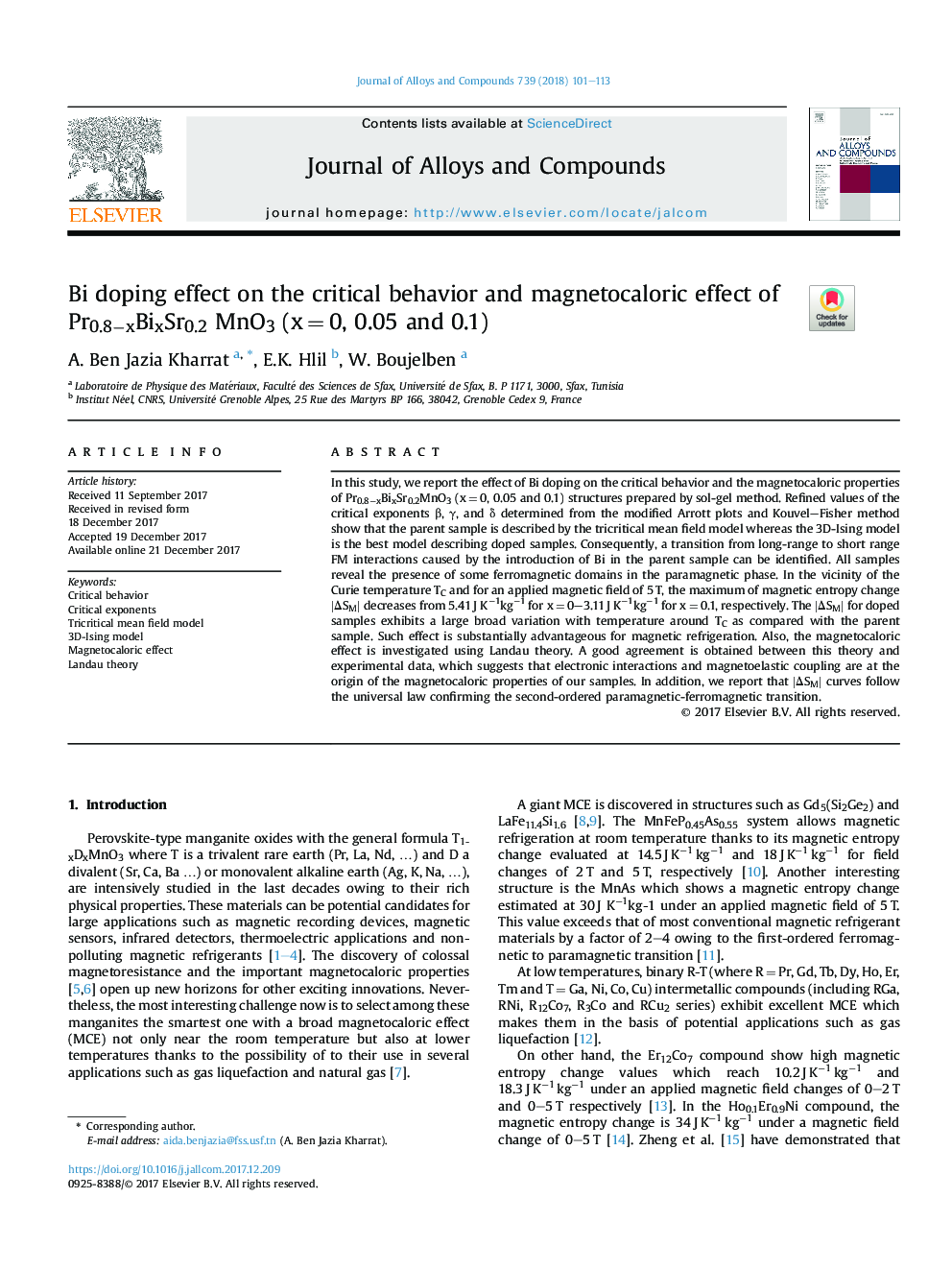| Article ID | Journal | Published Year | Pages | File Type |
|---|---|---|---|---|
| 7993831 | Journal of Alloys and Compounds | 2018 | 13 Pages |
Abstract
In this study, we report the effect of Bi doping on the critical behavior and the magnetocaloric properties of Pr0.8âxBixSr0.2MnO3 (xâ¯=â¯0, 0.05 and 0.1) structures prepared by sol-gel method. Refined values of the critical exponents β, γ, and δ determined from the modified Arrott plots and Kouvel-Fisher method show that the parent sample is described by the tricritical mean field model whereas the 3D-Ising model is the best model describing doped samples. Consequently, a transition from long-range to short range FM interactions caused by the introduction of Bi in the parent sample can be identified. All samples reveal the presence of some ferromagnetic domains in the paramagnetic phase. In the vicinity of the Curie temperature TC and for an applied magnetic field of 5â¯T, the maximum of magnetic entropy change |ÎSM| decreases from 5.41â¯J Kâ1kgâ1 for xâ¯=â¯0-3.11â¯J Kâ1kgâ1 for xâ¯=â¯0.1, respectively. The |ÎSM| for doped samples exhibits a large broad variation with temperature around TC as compared with the parent sample. Such effect is substantially advantageous for magnetic refrigeration. Also, the magnetocaloric effect is investigated using Landau theory. A good agreement is obtained between this theory and experimental data, which suggests that electronic interactions and magnetoelastic coupling are at the origin of the magnetocaloric properties of our samples. In addition, we report that |ÎSM| curves follow the universal law confirming the second-ordered paramagnetic-ferromagnetic transition.
Related Topics
Physical Sciences and Engineering
Materials Science
Metals and Alloys
Authors
A. Ben Jazia Kharrat, E.K. Hlil, W. Boujelben,
